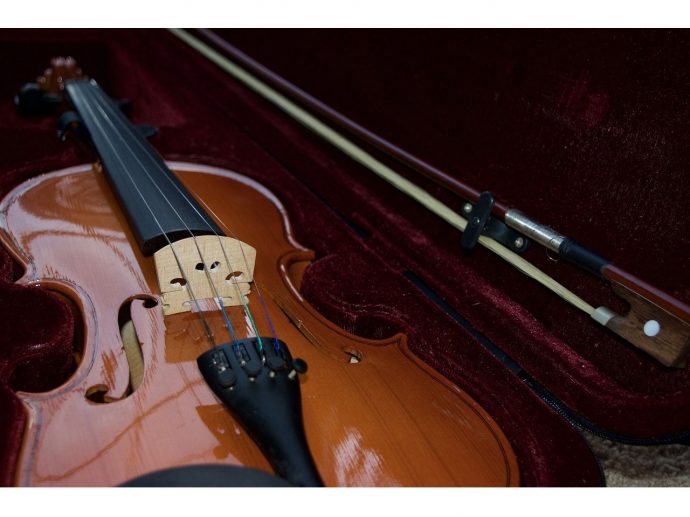Categories more
- Adventures (17)
- Arts / Collectables (15)
- Automotive (37)
- Aviation (11)
- Bath, Body, & Health (77)
- Children (6)
- Cigars / Spirits (32)
- Cuisine (16)
- Design/Architecture (22)
- Electronics (13)
- Entertainment (4)
- Event Planning (5)
- Fashion (46)
- Finance (9)
- Gifts / Misc (6)
- Home Decor (45)
- Jewelry (41)
- Pets (3)
- Philanthropy (1)
- Real Estate (16)
- Services (23)
- Sports / Golf (14)
- Vacation / Travel (60)
- Watches / Pens (15)
- Wines / Vines (24)
- Yachting / Boating (17)
10 Common Issues and Solutions for Violin Repair
Published
09/10/2024When it comes to the delicate and intricate art of violin playing, even the most minor issues can significantly affect the sound and performance. From cracks and open seams to buzzing strings and loose pegs, there are several common problems that violinists encounter. Luckily, many of these issues can be solved with some basic repairs or adjustments.
In this post, we will explore ten common problems faced by violinists and provide effective solutions for each.
Most Common Issues for Violin Repair and Solutions
1. Cracks in the Violin Body
Changes in temperature or humidity levels often cause cracks in the body of a violin. These cracks not only compromise the integrity of the instrument but also affect its tone quality. To repair a crack, a luthier may need to remove the top or back plate, apply glue to stabilize the crack, and then reassemble the instrument carefully. It is crucial to consult a professional for this repair.
2. Open Seams
As violins age or experience fluctuations in humidity, open seams may become apparent on their bodies. These occur when wood glue weakens over time or when it wasn't applied correctly during previous repairs. To resolve this issue, luthiers carefully remove old glue from the seam area before gluing it back together with fresh adhesive.
3. Buzzing Strings
A buzzing sound can arise when one or more strings come into contact with a fretless fingerboard or even other parts of the instrument due to improper fitment or leveling issues. An adjustable bridge height and ensuring proper string tension usually resolves this problem; however, consultation with an experienced luthier is recommended.
4. Loose Pegs
Pegs slipping while tuning is a frequent frustration among violinists as it leads to unstable pitch and poor intonation. If pegs don't fit well into their holes anymore, minor alterations can be made using chalk powder or peg compounds specially designed for peg fitting. In more severe cases, peg fitting and reaming by a luthier may be required.
5. Bow Hair Problems
The bow hair is susceptible to changes in humidity, as it can expand or contract, leading to loose or too-tight hair. It is crucial to maintain adequate tension in the bow hair for optimal playing. This issue can often be fixed by repairing the bow with fresh horsehair and making proper adjustments based on the player's preference.
6. Bridge Alignment
A misaligned bridge affects both sound quality and playability. Improper positioning leads to excessive string height or buzzing strings. Aligning the bridge correctly ensures a balanced tonal response across all strings, helps establish optimal string clearance, and contributes to the overall comfort and ease of playing.
7. Soundpost Issues
The soundpost plays a vital role in maintaining structural integrity and tonal projection in violins. Over time, it might shift or fall due to inadequate adjustments or changes in atmospheric conditions. You can reinstall an existing soundpost or replace a broken one from any violin repair shop in Atlanta.
8. Bow Stick Repairs
Excessive use or accidental damage can lead to issues with the bow stick itself, such as warping or breaking near the tip or frog area. While small cracks can usually be repaired successfully with splints and epoxy, more extensive damages may require replacing the entire stick.
9. Fingerboard Wear
With regular use, fingerboards undergo wear from contact with the strings, affecting the intonation and playability of notes across different positions on the neck. An experienced luthier can solve this problem by carefully smoothing out any grooves through planning and reshaping processes while preserving proper curvature.
10. Tailpiece Adjustments
Problems such as poor string angle over bridges or improper tailpiece fitment can adversely affect resonance and overall playing experience. A thoughtful evaluation and upgrading of the tailpiece material, design, or adjusting tail gut length can rectify these issues while aligning with individual preferences.
Conclusion
By understanding common problems like cracks, loose pegs, buzzing strings, and others, violinists can take proactive steps to address them. While preventive measures are always recommended, it is crucial to consult a skilled luthier when making any significant repairs. By maintaining the instrument's health and resolving these common issues promptly, violinists can ensure the best possible playing experience and keep their beloved violins in optimal condition for years to come.















